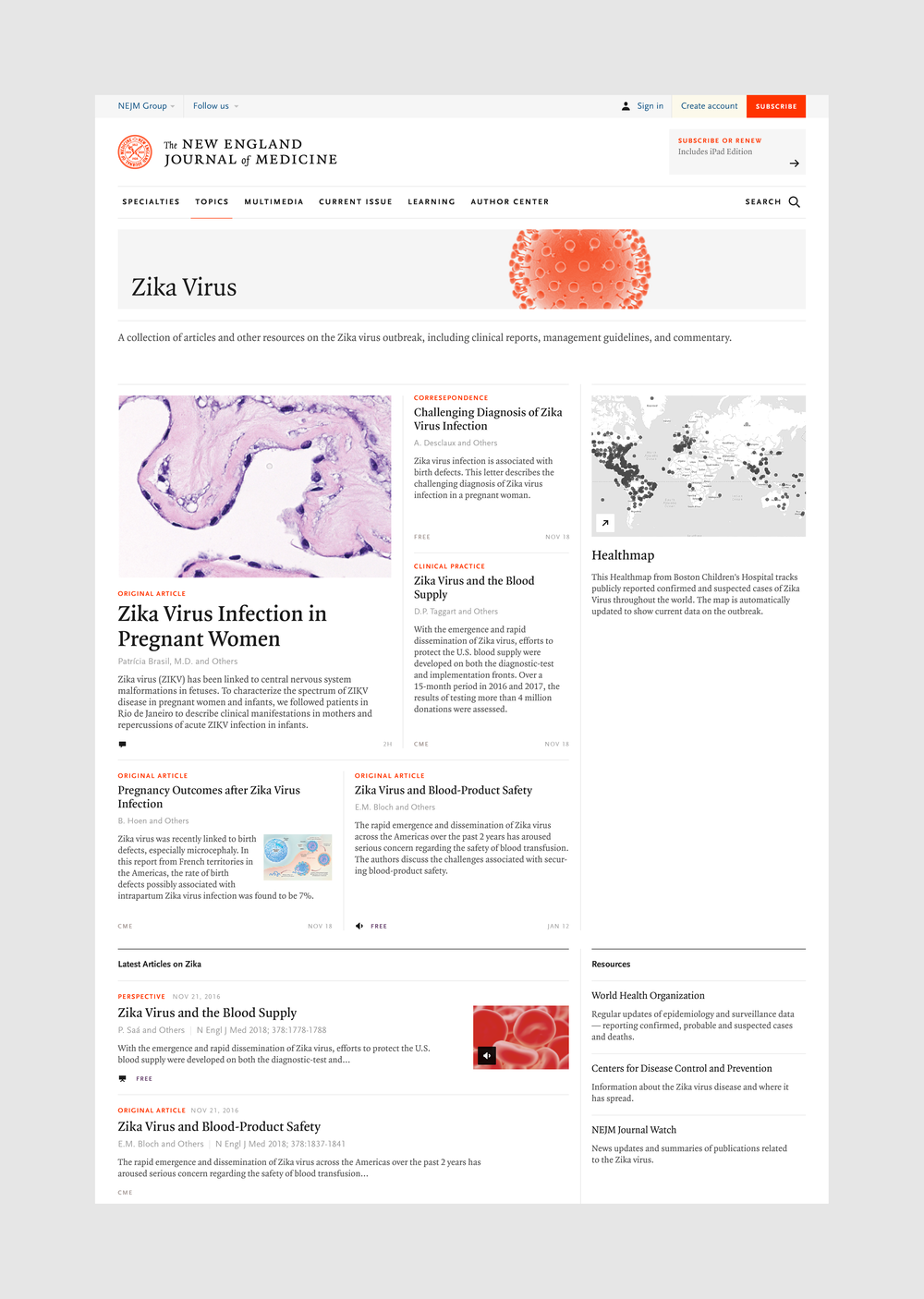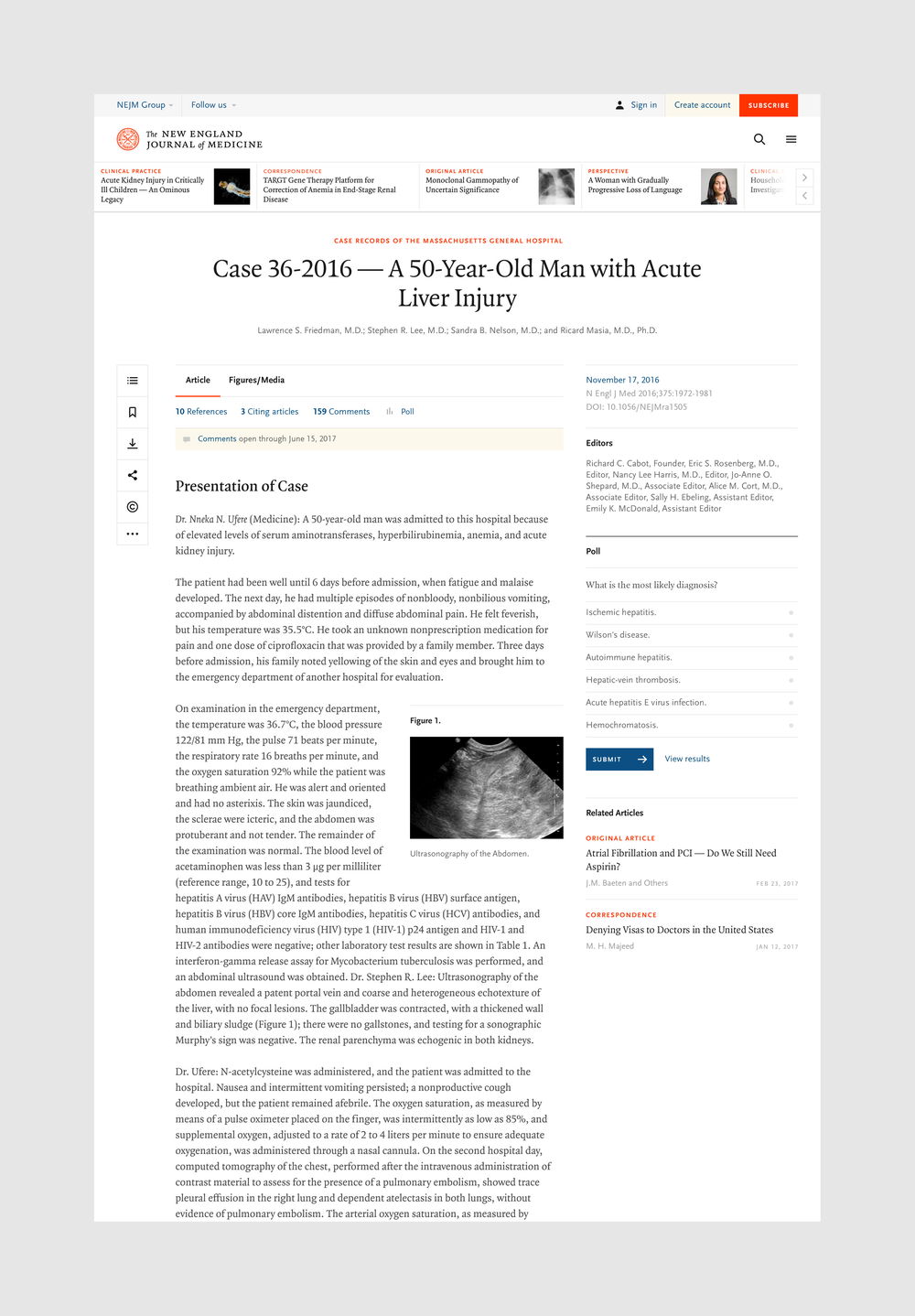 New England Journal of Medicine
New England Journal of Medicine
New England Journal of Medicine
2018–2019
200 years of medical breakthroughs



- Experience
- Research and analysis
- Experience vision and strategy
- Concepting and prototyping
- Experience design
- Design systems
- Technology
- Technology strategy and architecture
- Custom interface development
- Analytics and optimization


